R. Mark Liebenow's Blog: Nature, Grief, and Laughter, page 8
February 14, 2016
Shoveling Snow
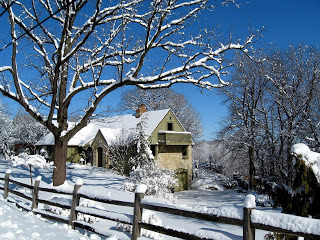 The world is quiet this morning after the snowstorm. The city feels cloaked and protected by snow.
The world is quiet this morning after the snowstorm. The city feels cloaked and protected by snow. Sounds outside are muffled.
Furnaces come on, and curls of steam and smoke rise from every snow-clad roof in the neighborhood. It looks like we’re living in a small village and everyone is cooking breakfast on wood stoves.
Black tree trunks and branches brush haiku across the white paper landscape.
Dawn arrives clear and cold. The rising sun sends yellow rays through the blue air that make the land glow. The frozen world sparkles. My boots creak and crunch on the snow as I shovel a path from the house to the road.
People emerge from their homes to shovel, and blink at the brightness of the white land. We wave to each other, talk about how this is a good snow, not a wet snow that would make our backs ache, but a snow with enough weight on the shovel that we know we’re doing work. There is fellowship among those who shovel snow.
A male cardinal flies up to the feeder; its red seems impossibly rich.
Bundled in a thick winter coat, I pause in my shoveling to listen to this place, to the stillness of heart in the presence of snow.
Published on February 14, 2016 06:58
February 9, 2016
River Teeth - Beautiful Things essay
"Waiting for Owls." micro nonfiction. Read it in 2 sips of coffee.
http://www.riverteethjournal.com/blog/2016/02/08/waiting-for-owls-
Published on February 09, 2016 07:25
February 7, 2016
Doing Nothing, Just Sitting In the Woods
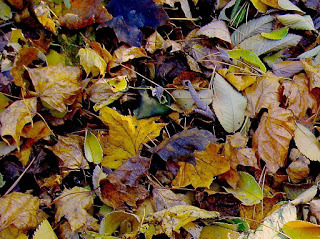 Some days, when’s a lull between the usual rush of activities, I don’t know what to do. I’m restless and look around for something productive to work on. Then I see the woods.
Some days, when’s a lull between the usual rush of activities, I don’t know what to do. I’m restless and look around for something productive to work on. Then I see the woods.In midwinter, the woods in central Illinois are bare and brown. The sky is generally gray, and on most days there isn’t enough sun to satisfy my cat. Without leaves in the way, I can see a mile over to the next hill where there are more brown trees. Brown doesn’t interest me much. I prefer green.
Everything around me seems to be frozen or missing, as if all mobile wildlife has packed its bags and traveled south for the winter. Those without feet or wings have pulled back underground, back to their roots. When I look closer, I see a patchwork of life thriving.
The trees and bushes are several shades of brown, and the dry leaves that paper the ground are a spectrum of muted colors — brown, of course, but also red, yellow, purple, and a surprising blue. Large rocks have an assortment of lichen in yellow, gray, black, orange and sage green.
There are also signs of death. Several trees have limbs that have lost their bark, and the snowstorm a month ago left a wake of damage. Several trees toppled over from the heavy weight of snow on their branches, leaving their roots exposed. One tree was simply snapped in half fifty feet up.
The breeze, with a hint of warmth, flows up along the hollow of the creek bed. Squirrels emerge to dig for acorns. White-breasted nuthatches hop up tree trunks, and a red-tailed hawk circles overhead, watching the ground for movement.
A crow caws from my left. A response comes from the other direction, and a laid-back conversation begins as each crow thinks about something witty to say before responding.
The last time I was here, several deer followed each other along the ridge.
There is a spirit to these woods; a presence I feel inside that calms my anxiety.
I shouldn’t wait for a lull in my schedule to come here, because this is where my heart and imagination are rooted. Everything I do needs to rise from this.
Published on February 07, 2016 05:03
January 31, 2016
Yosemite in Winter
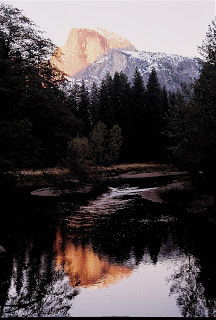
from Mountains of Light
Rising from my sleeping bag, I crawl out of the tent to take a dawn hike around the frosted meadows for an hour or so. The sun peeks over Glacier Point and lights up the bare granite rock of North Dome and the meadow below with a warm yellow glow.
In Cook’s Meadow, acorn woodpeckers hop up the trunks of dead trees, picking out acorns they stored there in the fall. By Sentinel Bridge, three young bucks are hanging out looking for trouble; their snorts come out in white puffs.
It’s probably in the mid-30s on the valley floor, at 4000 feet in elevation. On the trails that go along the rim of the valley, at 8000 feet, it’s likely to be ten degrees colder.
A crow in a nearby tree makes a gurgle noise. It's a funny sound, and each time the crow caws, its tail goes down. By Swinging Bridge, a square chunk of light gray granite that was washed downstream by the surge of the spring flood, now sits on the edge of a reflecting pool of emerald green.
Ice edges the meandering Merced River in white lace. Its tranquil water reflects the blue of the early morning sky. An ouzel flies up and dances in the rapids flowing over a two-foot-stretch of pebbles.
Taking a physical inventory, I find that my only warm place is in the small of my back. It’s seriously cold because the moist air near the river is penetrating my coat. I adjust my clothing and try to get warm but without success, and head to the cafeteria for a hot breakfast. Then it's back outside to see more of the valley in this early light. Later I duck into Degnan's for hot coffee. At noon I heat up soup over my campfire.
When the sun reaches Camp 4 at noon, it’s warm enough to take off one layer of clothing. After hours of shivering, my body finally relaxes.
I head off on a longer hike to see what other surprises are waiting.
Published on January 31, 2016 05:08
January 24, 2016
Invocation of Trees
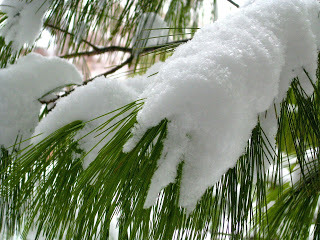 The trees, now naked of leaves, stand proud in the woods behind my house. They hold their strong bodies against the cold and rise up to the sky, rise up with their arms open in thankfulness to Creation for the year that has been, rise up in reflection and praise.
The trees, now naked of leaves, stand proud in the woods behind my house. They hold their strong bodies against the cold and rise up to the sky, rise up with their arms open in thankfulness to Creation for the year that has been, rise up in reflection and praise. The birch trees twirl in the breeze with open hands like whirling Sufis, reuniting heaven and earth. The pine and fir trees, heavy with snow, bow their heads and scatter their resinous incense on the air. The oak trees feed acorns to the squirrels who have slept in, and protect nuthatches and wrens with their stout branches.
We slow down, turn inward, and search for guidance to renew our tired hearts and minds. We become trees and return to our roots. Some of us will read books looking for inspiration, as well as momentary escape. Some will cook stews and soups, bake cinnamon bread and fruit pies. Some will sit by the window with a hot cup of oolong or peach tea and write down all the thoughts that have followed them this year wanting more of their attention.
Each morning we rise again and are greeted by the trees, our companions. We feel the turning of the world, and smell the cold scents of wet bark and earth. We watch red-tailed hawks and ravens glide through the sky, and feel our spirits soar.
Published on January 24, 2016 05:40
January 17, 2016
Zero
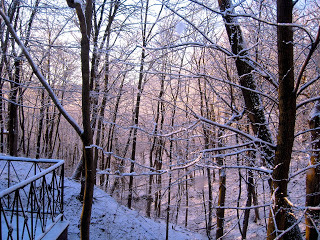 Before dawn it’s zero degrees outside.
Before dawn it’s zero degrees outside. Zero, as if there was no temperature outside. Nothing is moving, no animals or birds, not even the wind. I stand motionless in the dark, not wanting to ruffle the stillness that is holding my part of the world. The frozen sun rises crystalline and pink on the horizon, shifts to a light canary yellow that fades as the sun warms the air to eight degrees.
Some would say it’s bitter cold. I call it refreshing. Bitter starts at minus 20. I’m from Wisconsin. Yet when I breathe in, it feels like my lungs get prickly.
Hidden in the stiff, unmoving trees, is the unseen longing of leaves tucked deep inside the wood waiting for spring. Beneath the snow, mice, voles and our neighborhood woodchuck sleeps.
Squirrels emerge from the warmth of their hidden nests, knock snow off the branches that sparkles in the crisp sunlight as it drifts to the ground.
Zero is also the door between the living and the dead. A synapse. A pause. Which way will this day turn? Some things will die today. Some things will be born.
I look for a sign, as if this stunning scenery wasn’t enough, and listen for words whispered by the snow or the woods, some transcendent message attached to this vision that I can carry with me as I warm to the day.
But I think this is it. The message today is this. I exist only in THIS moment. If I fail to notice it, it ceases to exist and disappears. But if I pay attention to it, then it is born and becomes a reality, a presence that grows and becomes part of me.
Sometimes nature surrounds me with such beauty that I hesitate to breathe for fear of disturbing it. Sometimes the insights are small, like looking down and finding the footprints of a bird in the snow around my feet.

Published on January 17, 2016 05:33
January 10, 2016
Winter Canticle
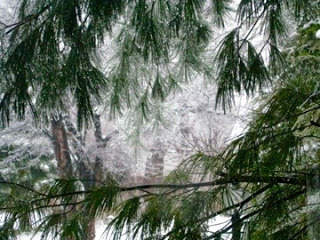
Primordial turn of Earth.Snow.Solitude with stone.
Light rises, travels below the south ridge.Cold lingers on the shadow side of the valley.Fleeting moments of warmth midday.
to this season’s voice.To this aliveness.To this.
Snow covers the mountains.Deer nibble at the ground.Squirrels and Stellar’s jays scold for no apparent reason.Each creature listens for enlightenment.
Night settles into the meadow.Moon rises over the far ridge.Coyote trots over buried trails, over memories of summer,listening
to winter sing in the pines.
Published on January 10, 2016 06:05
January 3, 2016
Solitude of Trees

In a back issue of The Yosemite Journal, Howard Weamer writes about the Ostrander Hut that is in the area behind Glacier Point. The Hut is ten miles out in the backcountry, at an elevation of 8500 feet, and in winter is accessible only by cross-country skiers. Weamer was its caretaker and host for many years, and writes of the wide-ranging discussions that would go on into the night between people of different backgrounds. He also mentions the need for solitude that was often expressed by his visitors: "those who welcome it are assumed to have attained something special."
This phrase stayed with me as I hiked by myself out to the hut one gorgeous autumn day. The stone hut was locked up when I arrived because it’s a winter destination, but I looked in the windows at the close sleeping quarters, then looked out at the tranquility of the forest, mountains, and the small lake that feeds Bridalveil Creek, and I felt contentment.
Does being comfortable with solitude mean that we have arrived at our goal of attaining solitude? Is there nothing that happens once we arrive? What about self-exploration?
Does solitude lead us into self-awareness, or does self-awareness lead us into solitude?
In our society it takes great effort to get away from the bustle of the city and find a place where nothing seems to be going on. And being happy when you’re alone with yourself shows an acceptance of solitude. But it’s in solitude that we sort things out, drop useless habits, set aside limiting conceptions and empty traditions, and focus on where we want to go. It’s spring cleaning for the soul.
Certainly solitude is good for restoring our sense of balance, but it can also be transforming. Attaining solitude means slowing down enough not only to notice a hillside of trees shimmering in the afternoon sunlight, but also to see the differences in each one.
“The beauty and natural silence overwhelm me here.... How do you ask people, though, to walk into the trees and listen to ... nothing?" Joe Evans
It’s not easy to get people to be still and listen to the natural world around them. When we finally stop our activities and stand quietly beside trees and listen to the silence of the woods, are we listening with the trees as they commune with nature, or are we listening to their voices in the silence, hoping to reach the place where we can finally hear our own?
During my hike, every time the breeze picked up, the sugar pines hummed. One time my mind jumped to the song "I Talk to the Trees" that Clint Eastwood and Lee Marvin, in his gravely voice, sang in the western movie, Paint Your Wagon, but as I sang the lyrics myself and started touching trees, I began to laugh and lost track of my thoughts.
As caretaker of the Hut, Weamer found that he often had to answer the same questions with each group that came in, and he tried, as with the Buddhist's bell, to speak and be heard as clearly on the fiftieth ring as on the first. He discovered his impatience and, in solitude, learned to let go of his pride. I would think that he also learned how to answer better, becoming, through careful listening, more tuned to hearing the nuances of how those same questions were asked. People do not always say what they mean, and sometimes they do not even know what they want to ask.
Learning to hear our own unspoken helps us hear the unspoken of others.
Today I walk into the woods near my home, along a creek to a place of solitude. The water is low and the boulders in the river are meditating in the still water of winter. I sit with the birds and squirrels to spend time in the quiet and think about the Ostrander Hut. I let the rush of the holidays fade, and wait for a vision to guide me in the new year.
Published on January 03, 2016 06:12
December 27, 2015
December Evening
 This evening in December is quiet, and the hills and fields are shaded in the sky’s pastel colors. Light has traveled beyond the earth’s edge and shadows will soon darken and lengthen into night. Nature begins to settle down into the blues and grays of winter.
This evening in December is quiet, and the hills and fields are shaded in the sky’s pastel colors. Light has traveled beyond the earth’s edge and shadows will soon darken and lengthen into night. Nature begins to settle down into the blues and grays of winter. I stand on my deck and listen to the woods — the creaking of the trees in the light wind, the light clack of empty black sunflower shells landing on each other, dropped by wrens and finches at the feeder. My thoughts move among the trees as I halfway watch the squirrels chase each other. Dusk fills the woods with shadows and I open to the mystery of what is here.
If this quietness should bring back a forgotten memory, an unresolved feeling, or an insight into something that once seemed impenetrable, I would dwell on it. But I don’t need anything to happen. The presence I feel standing here listening to nature is enough.
The silence of the woods with its blue shadows, the appearance of the sparkling stars overhead, the slow journey of the earth through the dark, silent cosmos, remind me of Sigurd Olson and the words he wrote from his listening point on the shore of Lake Superior:
The movement of a canoe is like a reed in the wind. Silence is part of it, and the sounds of lapping water, bird songs, and wind in the trees. It is part of the medium through which it floats, the sky, the water, the shore.
Last week, people walked the streets of my neighborhood caroling of joy. Houses were full of revelers, and lights glowed from every decorated window. When holiday parties became overheated, people wandered outside to cool down. They listened to the woods quietly celebrating winter, and felt hope in something unseen.
Published on December 27, 2015 04:00
December 20, 2015
In the Quiet of the Night
 One year after the Christmas Eve service, I walked around Watertown, Wisconsin through six inches of snow as it continued to fall, muffling the sounds of the occasional car going by.
One year after the Christmas Eve service, I walked around Watertown, Wisconsin through six inches of snow as it continued to fall, muffling the sounds of the occasional car going by. I walked past houses with windows lit up with warm lights and people celebrating inside, and went down to the Rock River.
It was a silence filled with the quiet assurance that hope was being passed from hand to hand, and from heart to heart, around the world tonight.
Published on December 20, 2015 05:57



